Bridging social distancing with clicks in retail
COVID-19 is presumably going to be the most defining event of this year. Its social and economic impacts are unfolding in a way that beats most estimates. In our earlier post, we wrote about how CMOs could gear up their organization to braze this impact. In this blog post, we further explore how marketers in retail can move fast and tackle the effects of the epidemic with actionable strategies.
Updated on Mar 25, 2020
While there are several actions being taken by marketers across the world, we feel there is a need to have a guiding framework on how and where you invest your efforts. To understand this better let’s look at this data point from McKinsey that explains the shift in buying patterns post lockdown in Italy in an extremely simple way.
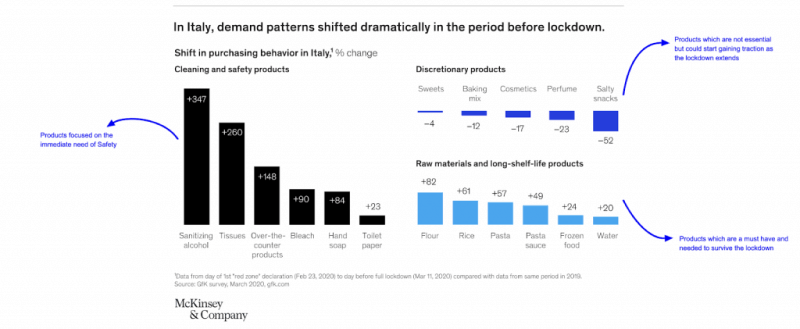
Drawing a parallel with this pattern, every eCommerce business needs to self assess and reorient their marketing strategies around these three broad buckets of products or services that they sell:
- Products or services focused around the immediate needs of safety
- Products or services which are a must have during the pandemic
- Products which are not essential at this point in time, but could eventually become a need as COVID-19 impact stretches beyond a certain period of time
What Are Some Actionable Strategies for Digital Marketers in Retail?
Based on the three themes above, let’s explore actionable strategies digital marketers in retail can adopt right away to navigate the challenges they are facing.
Focusing on the Immediate Needs of Safety
When we talk about safety, it’s not just about products like hand sanitizer that you might be selling through your store. It’s about helping your users to keep themselves safe in every possible way and letting them know how you care about their health and well-being. How you act and help your customers during this time could play an extremely important part in establishing great relationships and boosting customer trust and loyalty in the longer run.
Keeping Your Customers up to Date on Changing Shopping Policies
With the situation changing every day if not every other hour, it is important to keep your customers up to date on policies that might affect their purchases.
Faster delivery times on essential products? Offering free shipping with no thresholds? Running on limited delivery slots? Restricting returns and exchange for safety products?
– Quickly create hello bars or push notifications to keep your users up to date
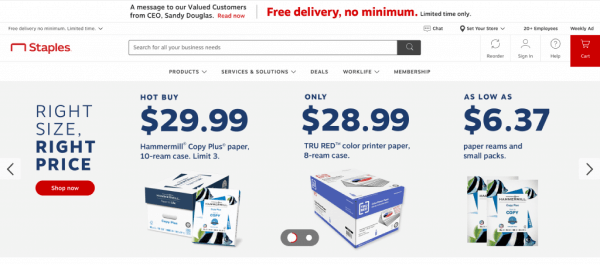
Reach out to Your Offline Users to Bring Them Online
Have a user base that has been predominantly shopping through your offline stores? Now is the time to help them practice social distancing while getting a similar or better experience through your online store. Create and execute campaigns that emphasize social distancing and convey that by going online everyone can do their part in reducing the spread of COVID-19.
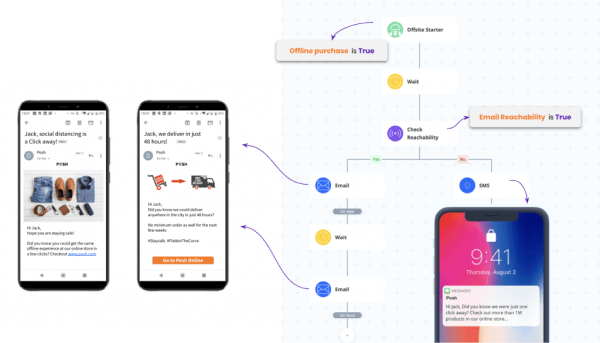
How Are You Keeping Your Shoppers “Safe”?
Whether you sell sanitizers or not, one of the biggest concerns shoppers have right now is how safe is your delivery method. Is there a chance that they could contract the infection while receiving these packages? Several businesses are now starting to employ “contactless curbside delivery” to ensure social distancing. Another important thing to highlight is how you are ensuring safety measures throughout your supply chain, including your fulfillment centers and employees.
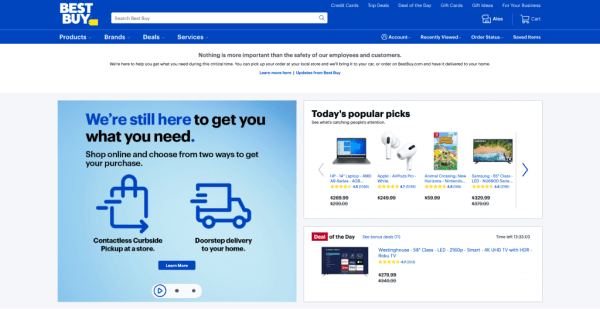
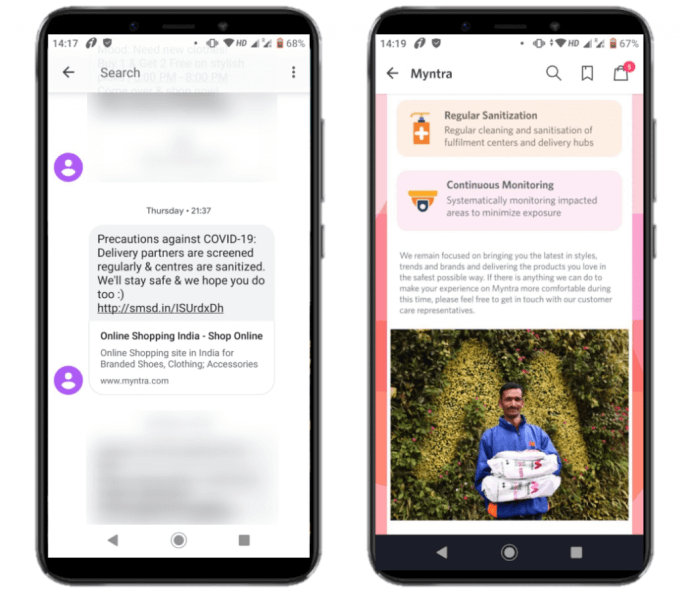
Disincentivize Offline Purchases
Still promoting users to find physical stores through your website? Instead, leverage your store locator pages to show relevant recommendations or add banners emphasizing the message to shop online. Additionally, you could start de-emphasizing the click and collect models and explain why it’s not the best choice at this moment.
Improved Product Discovery For Must-haves
For products that your users need for sailing through these difficult times, your number one goal must be to help customers find the right products and give them the right information to make a hassle-free purchase. It’s not so much about creating urgency for these products anymore.
Automated Back In Stock Notifications
It is certain that your customers will see stockouts for quite a few products that are popular and trending. It would serve as a strong re-engagement strategy to implement back in stock notifications. With Insider’s automated back in stock web push notifications, you can easily set rules to re-engage users. The setup is simple and the platform takes care of detecting out of stock products visited by your customers and triggers a notification as soon as it is back in stock.
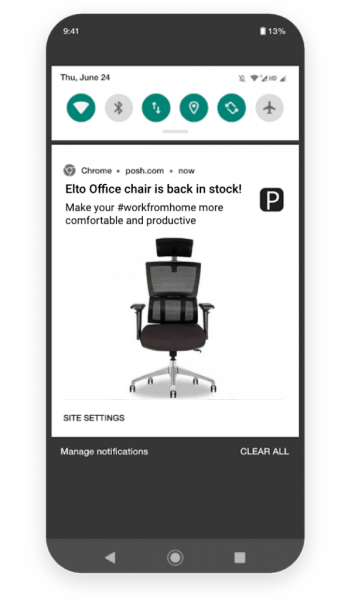
Product Badging for Rationing Information
Having all the information upfront to help facilitate a purchase decision might be the single biggest influence on customer experiences these days. For must-have products where you would want users to avoid hoarding, it would be best to give them information on the rationing of these products. Product badging can serve as a great way to highlight this information in your listings page.
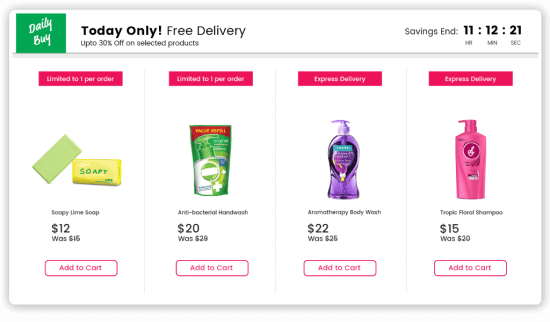
Recommendations for Out of Stock/Zero Search Results Page
Recommendations can serve as a great way to tackle stockouts. Leverage similar or alternative product recommendations on product pages for out of stock products or on zero search results pages.
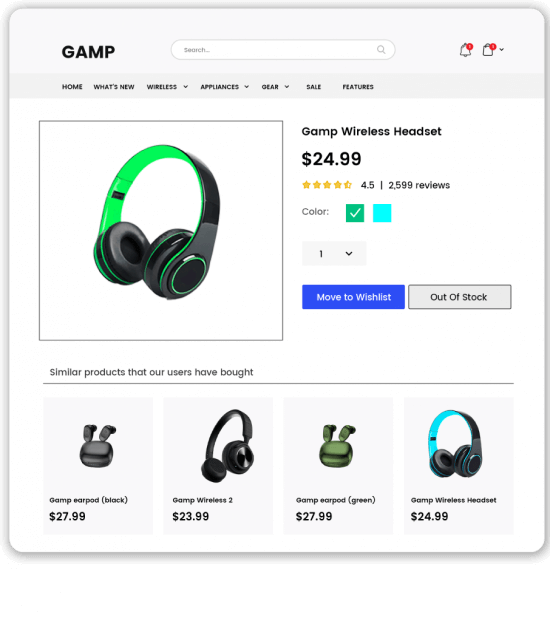
Don’t Encourage Hoarding and Panic Buying
The most important thing for marketers is to stay away from strategies that create urgency. The last thing you want is a section of your users hoarding all the products and a large chunk of your user base seeing more stockouts. This is the time when you can build trust and loyalty among your customer base with more helpful experiences that are focused on getting every shopper what they need.
Marketing Needs to Be Helpful and Sensitive for Non-Essential/Luxury Products
While what constitutes a non-essential product during a pandemic seems to be pretty clear, how you market these products can definitely take a hint of creativity. Just because people are in isolation or lockdown, does not mean that they do not need these products at all. If anything, as time passes by people might start to show more interest in these types of products to compensate for the lack of socializing. The best way for a marketer to engage customers is through focusing on messaging that highlights how these products make one feel good and live better during these times.
Creating New #stayhome Product Collections
Staying at home 24×7 brings up several needs that would have been usually solved by 10+ hours at work for most people. You can categorize your products into collections that can improve the #stayhome experience. With products like InStory you can make this buying experience fun and engaging as well.
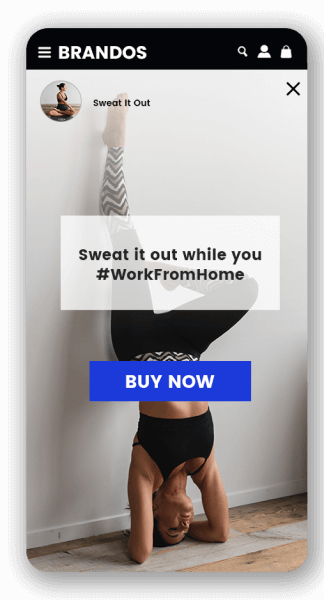
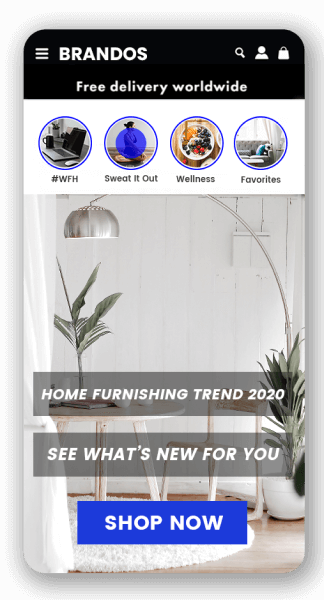
Designing Meaningful Experiences Knowing What Your Customers Need
Help your customers find products they might need over a course of time. Deliver an interactive experience on what they are looking to explore, understand their preferences and budget, and recommend products that might be a good fit for them. Insider’s Maven, serves as an excellent way to build these experiences in a few minutes and deploy it across your online store.
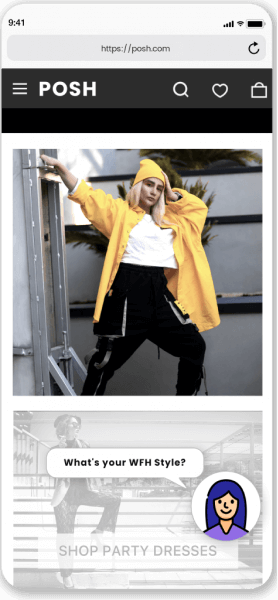
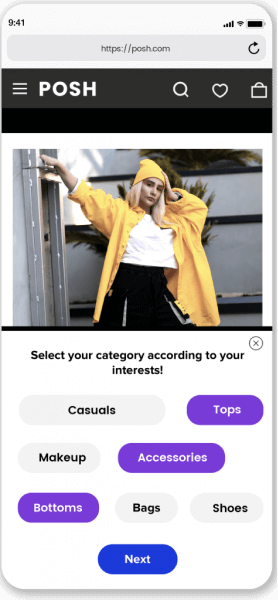
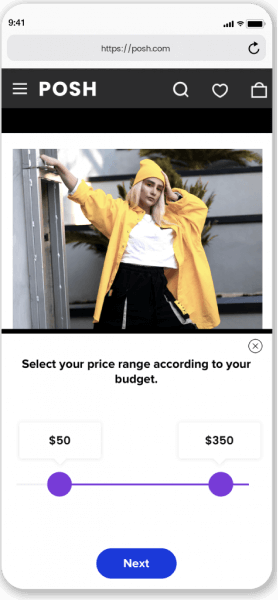
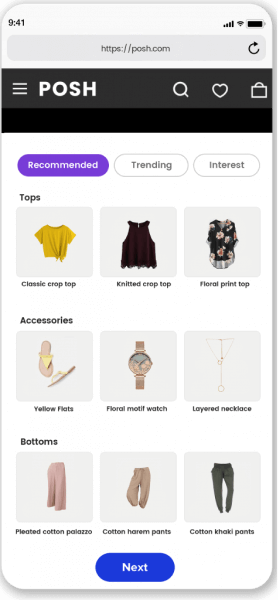
Use Your Early Adopters to Help Bring Their Friends and Family Online
Now is the time to help and get as many users online to practice social distancing. Identify your strong brand advocates or loyal customers to further promote your brands. Create email or push campaigns to encourage your loyal users to introduce your store to their friends and family and help them stay safe with online shopping.
In summary, it is time for us as marketers to primarily be more compassionate and helpful while serving our business and economic goals. The way you engage with your customers during this period of uncertainty would go a long way in the perception of your brand and shape your business. Be responsible, be helpful and be transparent.
To learn more about how Insider can help your business during the crisis with continuity and growth reach out to us and we’ll schedule a personalized demo with one of our digital growth experts.



















